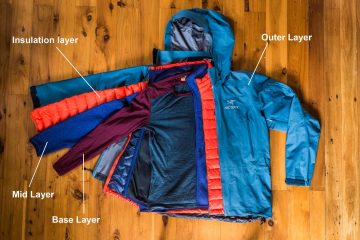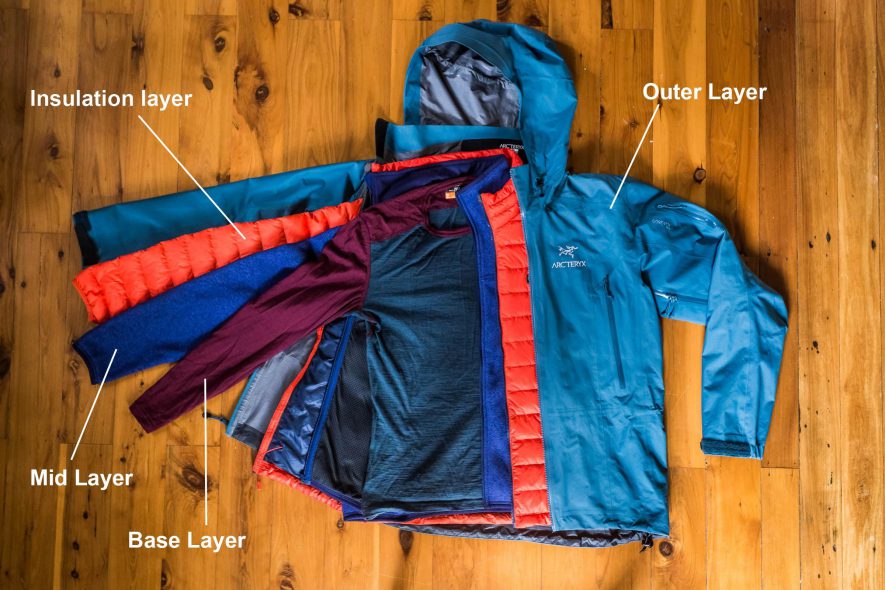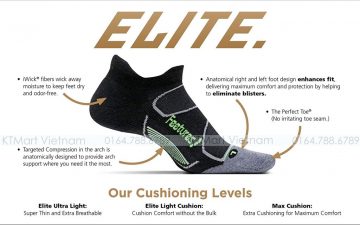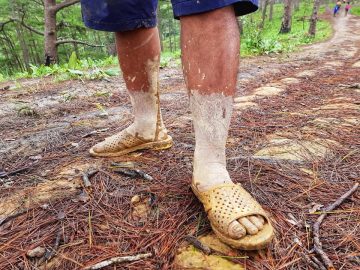
The ‘layering principle’ is the key to dressing for all temperatures
You’ve probably heard of a ‘layering system’ – but what does this mean?
Essentially, you wear a larger number of light layers of clothing, rather than a few thick layers. This gives you versatility in ever-changing conditions and climates. It also allows for extra warmth by trapping air between and inside each layer, creating a higher level of insulation.

The Layering Principle. Image: Lachlan Gardiner
There are four basic layers:
Base Layer – the layer closest to your skin which wicks sweat from your skin and disperse it to the next layer where it can eventually evaporate. A base layer should fit snugly but not be restricting.
Mid Layer – something you wear over your base layer for a bit of extra warmth, such as a merino thermal or lightweight fleece. Ideally you’ll want your mid layer to feature a zipper for more venting options. Mid layers should be more robust than your base layer, but still comfortable and lightweight. In mild conditions, your mid layer is also your top layer.
Insulation Layer – this layer is solely for additional warmth. Look for something that is breathable, lightweight, low-bulk and able to retain warmth. Down takes the gold medal for the most trusted insulation layer with its ability to provide lots of warmth for very little weight or bulk. Synthetic down is also becoming popular with its ability to retain thermal efficiency even when wet. If you’re going somewhere cold and wet, synthetic down is a great option.
Outer Layer – your outer layer is all about protecting you from the wind, rain and snow, while also being breathable to allow your sweat and body heat to escape.
Even if you’re trekking in a traditionally warm climate or season, keep in mind that temperatures drop at altitude and also at night. The wind chill can also be a frosty factor as you climb to higher elevations. So, don’t forget your extremities! You can apply the same layering principle to your hands and feet, using a liner glove with thicker mittens or over mittens.
- https://www.facebook.com/0347886789KTMart.vn
- Chat với KTMart: m.me/0347886789KTMart.vn
Zalo, Viber: 0347886789 – 0904644346
=>> Bản đồ tới KTMart | http://bit.ly/2DxsJsn
- Tầng 1 nhà D1 ngõ 57 Nguyễn Khánh Toàn ( Map to KTMart: http://bit.ly/2DxsJsn)
- https://ktmartvietnam.business.site/
- http://ktmart.vn
Trân Trọng!



